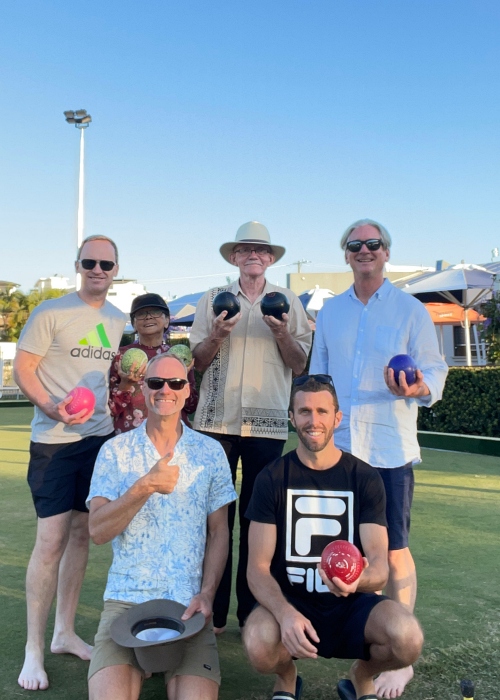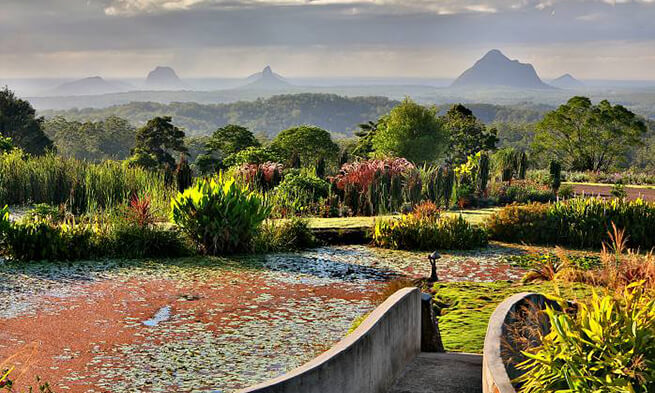A Day in The Life of a Sunshine Coast Surf Lifesaver
Is there any better way to spend your time than being on the beach, soaking up the sun, doing one of the most important jobs around – safeguarding the lives of others as a Sunshine Coast Surf Lifesaver ?
This is a job that hundreds of people do every single year, on the beautiful beaches of the Sunshine Coast.
Before we go on, we need to explain what a surf lifesaver is, because there is a difference between this role, and the lifeguard role itself.
A surf lifesaver is a volunteer role, but in order to do this, participants have to be highly trained, be a very strong swimmer, and have obtained the surf rescue certificate. They also need to be open to continuing training by going on other courses to add to their skills. Lifesavers are also trained in life saving medical moves, such as CPR.
On the other hand, a lifeguard is a paid job. A lifeguard is not a volunteer, and as a result, they are trained to a higher level still, have to constantly stay up to date with life-saving moves, be extremely good swimmers, and have expert knowledge of the sea and surf conditions around the coastline. Sunshine Coast Surf Lifesaver
Sunshine Coast Surf Lifesaver
A lifesaver may choose to continue their training to work up to a lifeguard role in the future, or they may continue to work as a volunteer, alongside their usual job.
If you have been to any beach on the Sunshine Coast, you will have seen a lifesaver. Dressed in the iconic yellow and red outfit, lifesavers patrol the beach, offering assistance to those who need it, answering questions, and offering advice. They are there as help as well as a life-saving godsend. Lifesavers work alongside lifeguards, but they are trained to carry out vital life-saving moves independently.
What Does a Life Saver do on a Daily Basis?
Lifesavers work on shift rotations, so depending upon the shift, depends upon the time of start. There are also breaks at regular intervals, to keep concentration levels high. A recent partnership between the Sunshine Coast Council and Surf Life Saving Queensland has increased the number of lifesavers on the coast’s beaches for the next five years.
There are currently 20 beaches which fall under the remit, and 10 of those are seasonal. Popular Discovery Beach has recently become a year-around patrolled beach, offering extra safety and assistance for visitors, whether surfing or not.
The coast is known for its white surf beaches, and although a huge 70km is encompassed along the coastline, the most popular beaches are where the crowds flock to. The Gold Coast has bigger swells than the Sunshine Coast, but that doesn’t mean that points and breaks can’t be dangerous. The waters are still dangerous at certain times, and when the wind is high, the surf is even higher!
Patrol times differ, and these are on a board at the entrance to the beach. You will the patrol tower, where the lifesavers and lifeguards sit and watch over the beach. If anyone shows any signs of distress, the lifesaver will see from their patrol sea, which is raised up high for better vision, and will spring into action.
If you’ve ever seen Baywatch, you’ll basically get an idea of what happens next!
Obviously, during a shift, a lifesaver hopes to not use their life-saving skills, because that means that nobody was in danger, and everyone has to have a great time, but there are going to times when those skills are very badly needed.
Life Saver
On top of patrols, lifesavers can be seen walking around the beach, checking that everyone is okay, there are no issues, and also do general cleaning tasks, to ensure the beach remains pristine. At the end of the shift, when patrol has finished, the patrol tower is cleaned and closed up for the day, and the beach is left in a clean and tidy manner.
Whilst you can stop people visiting the beach after patrol time has finished, these times are, as we mentioned, very clearly displayed for advice purposes.
How to Become a Sunshine Coast Surf Lifesaver
If reading this has inspired you to think about a future career as a lifesaver, either on the Sunshine Coast or your local beach, then let’s talk about the basic requirements to become a lifesaver, as well the qualifications you will need to have.
In order to become a surf lifesaver on the Sunshine Coast (be aware that the certificate names may be different in your particular area), you will need to obtain the Surf Rescue Certificate (SRC).
In order to do this, you need to be 13 years of age and over, be able to swim 200 metres in less than 5 minutes, and in a pool that is 25 metres long. After this, you need to obtain your Bronze Medallion. For this, you need to be 15 years of age, and you should have the ability to swim 400 metres in under 9 minutes. This also needs to be in a pool of 25 metres in length.
Once you have achieved those certifications, the next step is to contact your local surf club and ask about any vacancies for volunteers. If successful, you’ll gain invaluable experience, and you’ll have the opportunity to continue your training. You could then go on to become a fully-fledged lifeguard in the future!
Why Are Surf Lifesavers so Important?
It might sound like a ridiculous question, but if we have lifeguards, why do we need lifesavers?
Basically, lifesavers are not in any way less than a lifeguard, it is just that they are volunteers, they are not paid, and they do not have the same duties as a lifeguard. We need lifesavers to work alongside lifeguards, and in some cases to work unsupervised. Support is vital in a job which is so important as this.
The waters around the Sunshine Coast are as dangerous as anywhere in the country. The fact that this area is so famous for surfing tells you that there are waves, and that means the can come out of nowhere and knock you sideways if you’re not experienced.
More and more people are learning to surf these days, and before that experience and ‘feel’ for the water comes, there is a high risk of something occurring. The high majority of surf experiences are fantastic, but for safety reasons, and for peace of mind, lifesavers are a vital part of the Sunshine Coast’s beaches.
The fact that there is an arrangement in place for the next five years, secures the safety of visions heading to the beach for enjoyment and fun.





